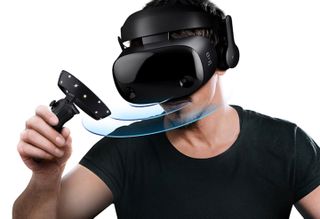
Should you buy Samsung's new HMD Odyssey+ Windows Mixed Reality headset?
What has stayed the same with the HMD Odyssey+?
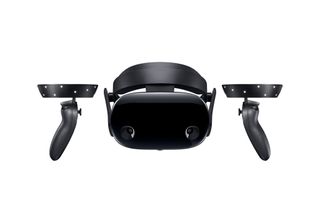
Whether you opt for the new Odyssey+ or stick with the aging original Odyssey, you're getting dual 3.5-inch AMOLED display with a 1440x1600 resolution in each. The headset has a 110-degree field-of-view (FOV) that allows you to see quite a bit of action without feeling like you're in a tunnel, and 360-degree spatial sound provided by the built-in AKG headphones only adds to the immersion. Like the Oculus Rift, these headphones are built into the side strap of the headset, meaning you don't have to deal with extra wires and bulky hardware.
Both headsets likewise have built-in microphones that work with Cortana or for a bit of trash-talking in your favorite multiplayer VR games. Overall build is just about the same — you might have a hard time telling the two headsets apart with a quick glance — but the Odyssey+ has shed a bit of weight and made some changes to the fit.
You get an adjustable headband that tightens and loosens to fit your head, and there's a wheel to adjust the inter-pupillary distance (IPD) on both headsets as well. The original Odyssey is still one of the finest WMR headsets out there, but the Odyssey+ does come with some interesting upgrades.
What are the major changes made to the HMD Odyssey+?
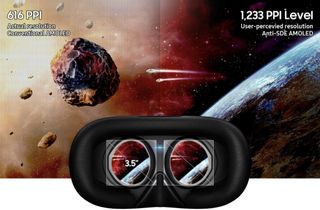
In terms of comfort, the Odyssey+ has a wider nose guard (40mm vs. 32mm) and a wider eye box (146mm vs. 138mm). Your face is going to feel less smushed while it has the HMD attached to it, and there's more room to fit glasses inside if you can't use VR without prescription frames.
Perhaps the biggest change is to the way the displays work. The Odyssey+ uses the same AMOLED screens inside, but there's no more screen-door effect (SDE) thanks to new Anti-SDE technology. The actual resolution provides 616 pixels-per-inch (ppi), but with this new tech, the user sees double that, about 1,233 ppi.
If you've tried PC-based VR systems before, you probably noticed how there's a fine grain over top of the image. It's not always noticeable, but it can certainly be seen if you take a second to look at the display rather than the picture. With this new technology, Samsung has effectively removed it (almost) entirely.
Can you still play the same games on the HMD Odyssey+?
The Odyssey+ is a WMR headset, meaning it's compatible with all games and experiences you could play on the original Odyssey, including those from Steam. The controllers that came with the original Odyssey will indeed also work with the Odyssey+, and the entire setup (which is quite short) involves the same steps.
Get the Windows Central Newsletter
All the latest news, reviews, and guides for Windows and Xbox diehards.
Samsung Odyssey+ is a great VR headset made better
If you hate SDE in your VR headset and are looking for the best WMR HMD out there, the Odyssey+ will fill the role nicely. It does cost about $150 more than the original Odyssey, though, so it might not be for everyone.
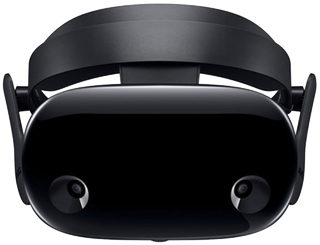
Shiny new VR
Samsung's Odyssey+ has effectively removed SDE from its display for a clear VR picture. Add to that a lighter build and more comfortable fit, and you have a premier WMR headset that can handle everything the other headsets can.
Standard Samsung Odyssey is still great and it's cheaper
If you don't mind a bit of SDE in your headset and you can get away with your headset weighing fractionally more, the original Odyssey is still a great (and cheaper) choice that is able to handle all WMR content.
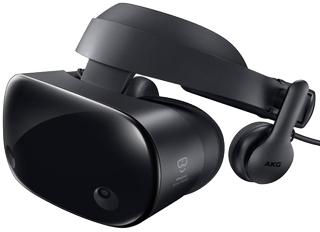
Still capable
If you don't have $500 to spend on a VR headset, the original Odyssey is available for quite a bit less. It's still a fine headset — the best of the WMR bunch before the Odyssey+ came along — that will get you into WMR quickly and easily.

Cale Hunt brings to Windows Central more than eight years of experience writing about laptops, PCs, accessories, games, and beyond. If it runs Windows or in some way complements the hardware, there’s a good chance he knows about it, has written about it, or is already busy testing it.
